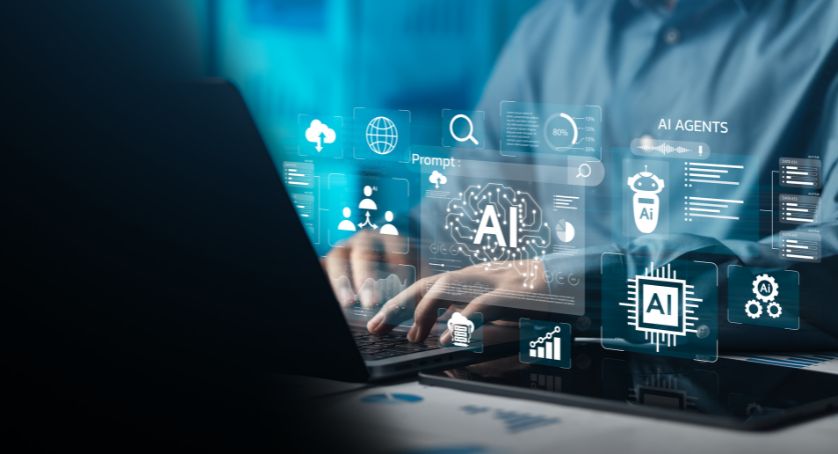An Uncompromised Life: Career Takeaways from RMUC
It’s been a little over a month since the 2025 Rent Manager User Conference, and we’re still reminiscing about all...

The use of artificial intelligence (AI) in the workplace is on the rise. According to a recent study by Gallup, the percentage of U.S. workers who say they use AI at work has doubled in the last two years. From individual use of chatbots to enterprise adoption of AI platforms, this new era of technological advancement is exploding with potential.
Still, like any new technology, using artificial intelligence at work can come with questions: How can AI improve my productivity? Will AI replace my role? Concerns are common—52% of respondents in a recent Pew Research study reported feeling worried about the future use of AI at work.
Yet, despite the uncertainty some may feel, AI is here to stay. 92% of companies plan to increase their AI investments within the next three years, and it’s estimated that long-term, AI could add up to $4.4 trillion annually to the global economy through productivity gains and new business applications. With this much potential, learning to use AI at work will be crucial for career growth in the years ahead.
Artificial intelligence refers to computer systems that can perform complex tasks and reasoning like human beings. AI is classified into different types based on the tasks the AI is asked to perform and its capabilities to learn, mimic human intelligence, and make decisions without human input. The only type of AI that exists today is Narrow AI, or Weak AI, which is designed to perform a specific task or set of tasks. Narrow AI cannot perform tasks it hasn’t been programmed to do, nor can it understand abstract concepts or learn new information without human intervention. The other AI types are General AI, or Strong AI, and Super AI, or Superintelligence. Both capabilities are currently theoretical. They involve hypothetical artificial intelligence models that can learn to accomplish new tasks, reason, make judgments, and possess cognitive abilities on par with or surpass human intellect.
Within Narrow AI, there are two sub-categories based on the AI’s functionality. Reactive Machine AI is the simplest form of AI. These systems don’t learn from past experience and perform only the tasks they were designed for. Many forms of modern technology use Reactive Machine AI, including social media recommendation algorithms, industrial robots, smart home devices, and the most famous example, IBM’s chess-playing supercomputer, Deep Blue.
Limited Memory AI is becoming more ubiquitous, especially within the workplace. It involves AI systems that temporarily store information to make decisions and improve over time to reach a desired result. Generative AI, like ChatGPT, Virtual Assistants like Siri or Alexa, and self-driving vehicles are all forms of Limited Memory AI.
Other subsets of Narrow AI systems include machine learning (ML), Natural Language Processing (NLP), and Language Learning Models (LLM). These subsets often apply to AI systems used by corporations and individuals in the workplace. Depending on their needs, organizations may use a combination of these AI capabilities simultaneously.
As of 2025, around 78% of global organizations report using AI in at least one business function. From customer service to automation to data analysis, companies use AI to enhance productivity, increase revenue, and improve efficiency. Different industries use AI for various functions, but here are a few of the most common examples:
Even when companies lag in adoption, employees increasingly use AI independently. Nearly 78% of AI users say they use their own AI tools at work, rather than relying on company-wide systems. With the use of Generative AI tools, employees are turning to individual AI solutions such as:
While AI enables efficiency and innovation, it also raises important ethical and operational questions. Corporations and employees should use AI responsibly. The following ethical issues that may arise include:
The AI industry is still in its infancy, but it’s clear that it will completely transform the workplace. As artificial intelligence continues to develop, it’s almost impossible to know how our roles and organizations will change in the next decade. Exploring today’s AI tools—and learning to use them responsibly—offers workers and organizations a head start in preparing for the workplace of tomorrow.